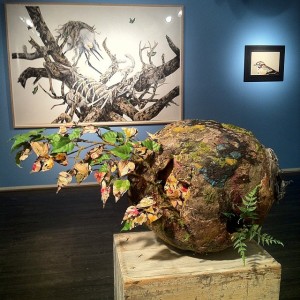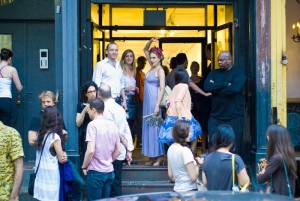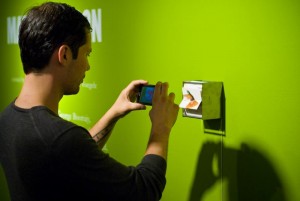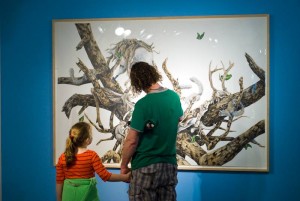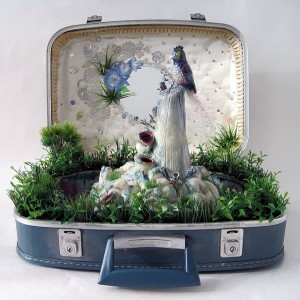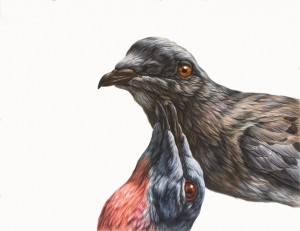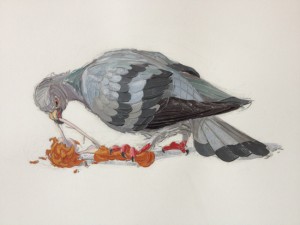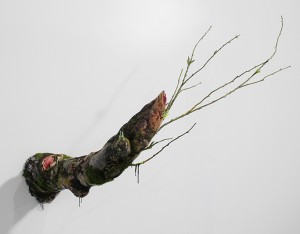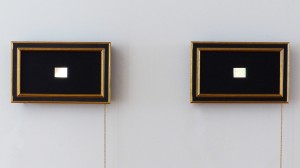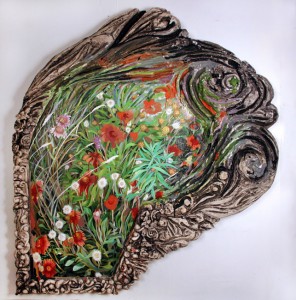This Summer The Lodge Gallery celebrates the season of fertility with “Mating Season,” an exhibition of work inspired both by natural history and everyday life.
Artists include: Lina Puerta, Juan Fontanive, George Boorujy, Maxi Cohen, Leif Solem, Monique Mantell, Brian Adam Douglas, Anita Cruz-Eberhard, Sirikul Pattachote, Sarah Bereza, Liza Béar, Ryan McLennan, Herb Smith, Frank Webster and Tiffany Bozic.
Curated by Jason Patrick Voegele & Keith Schweitzer
According to our best collective fossil evidence, something astonishing happened during the late Jurassic to early Cretaceous period that transformed life as we know it. About one hundred and fifty to one hundred and thirty million years ago the first flower bloomed and the first birds took flight. The process by which the multitudes of various bird species and flowering plants would come to populate every inhabitable region of the earth is epically slow. We know that almost immediately after the first flower blossomed, the birds of that time, along with other small animals and insects, became enamored with the sweet smells and free lunch. They quickly became the beneficiaries of a symbiotic relationship that continues to this day. This relationship can be roughly defined as a food for sex program, wherein the flowering plant offers the bird a tasty reward in exchange for carrying out the process of transporting reproductive pollen to fertilize plants of the same fruit on the other side of the garden. As in modern times, competition for services drove adaptation and diversification of the species. By the time humans arrived on the scene, flowering plants had flourished to become the dominant vegetation of most terrestrial ecosystems and subspecies of geographically specialized birds had unfolded into countless assortments.
As we make our way through the early stages of the twenty-first century more than half of the world’s human population has come to inhabit a landscape of ever expanding urban sprawl. As mankind increasingly alters the global landscape, new adaptive shifts have begun to take place, once again forcing the transformation and evolution of indigenous species. Successful city birds often exhibit the most spectacular displays of natural selection with a unique behavioral plasticity. With all the typical urban feasts and hazards to contend with, city birds have developed a fearless equilibrium with their human counterparts. For example, feral pigeons, originally bred from the wild rock dove, find the ledges of buildings to be a suitable substitute for sea cliffs and are abundant in towns and cities throughout much of the modern world.
